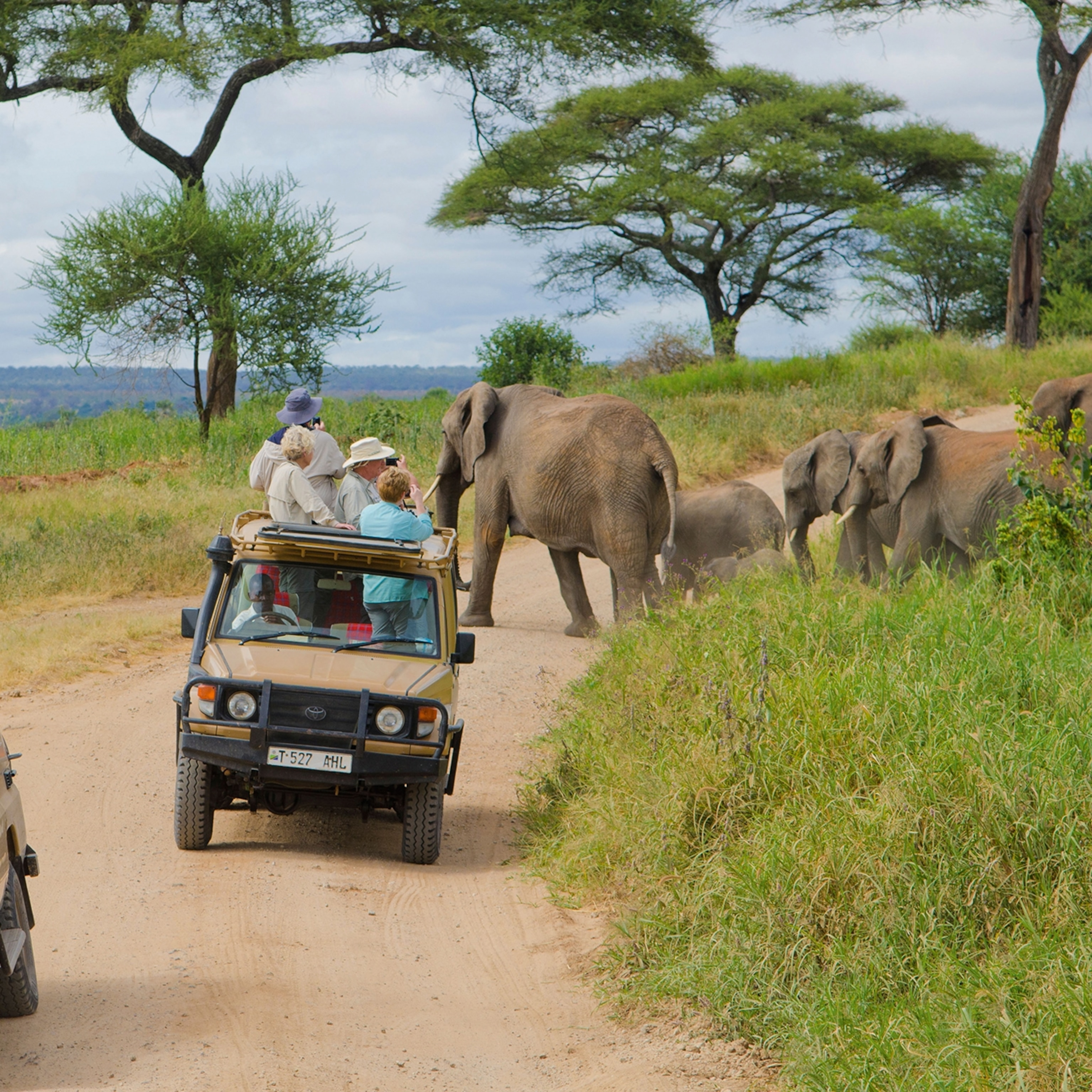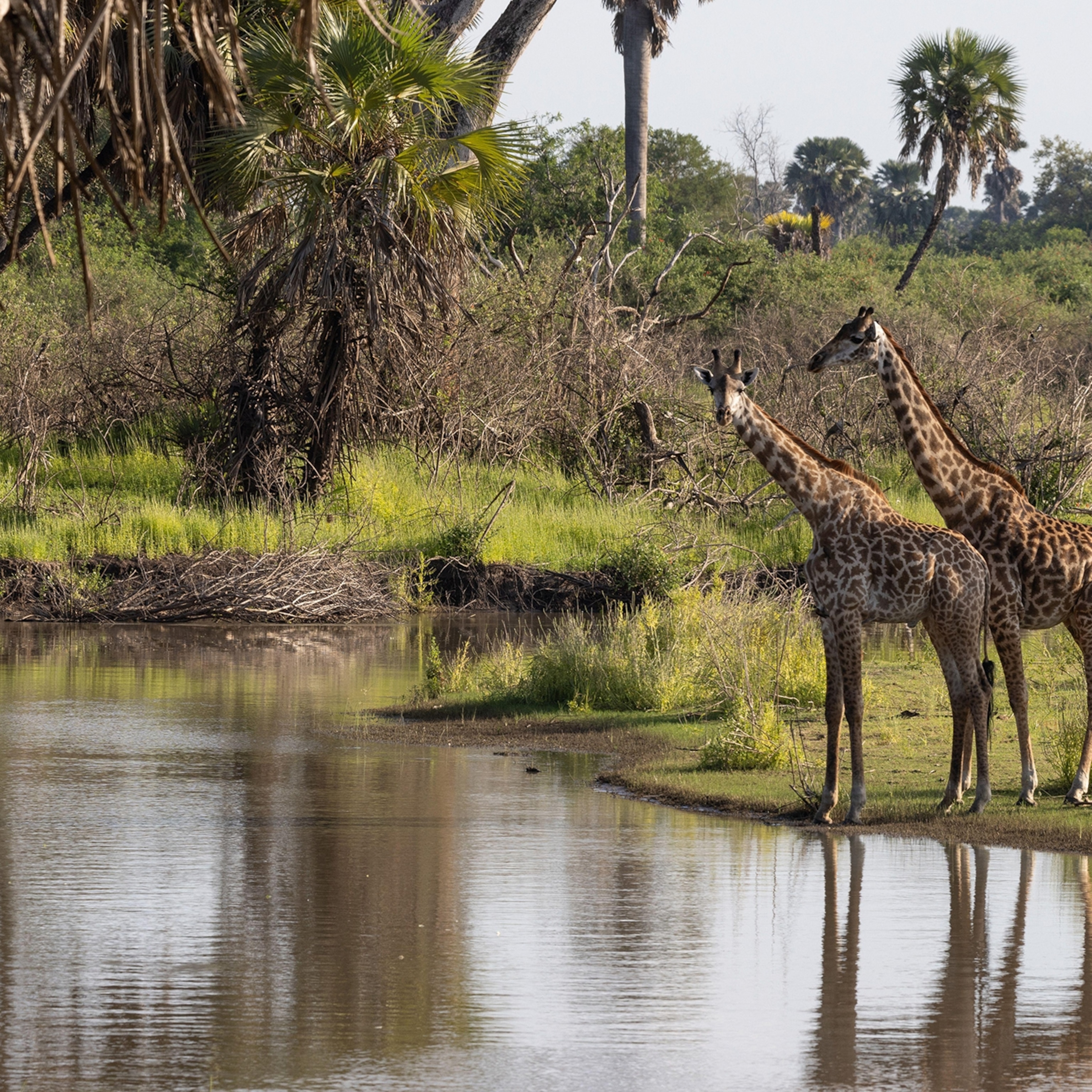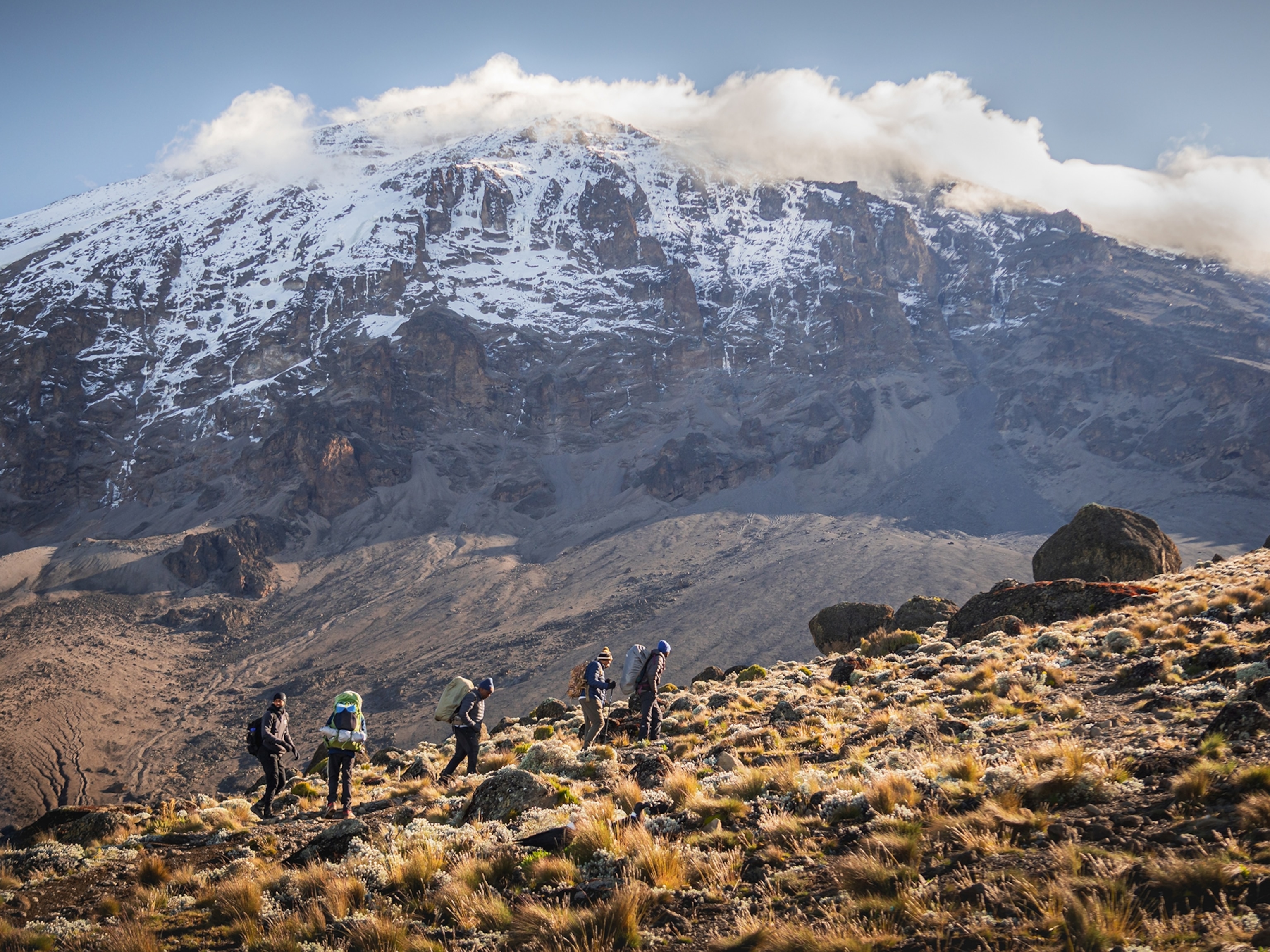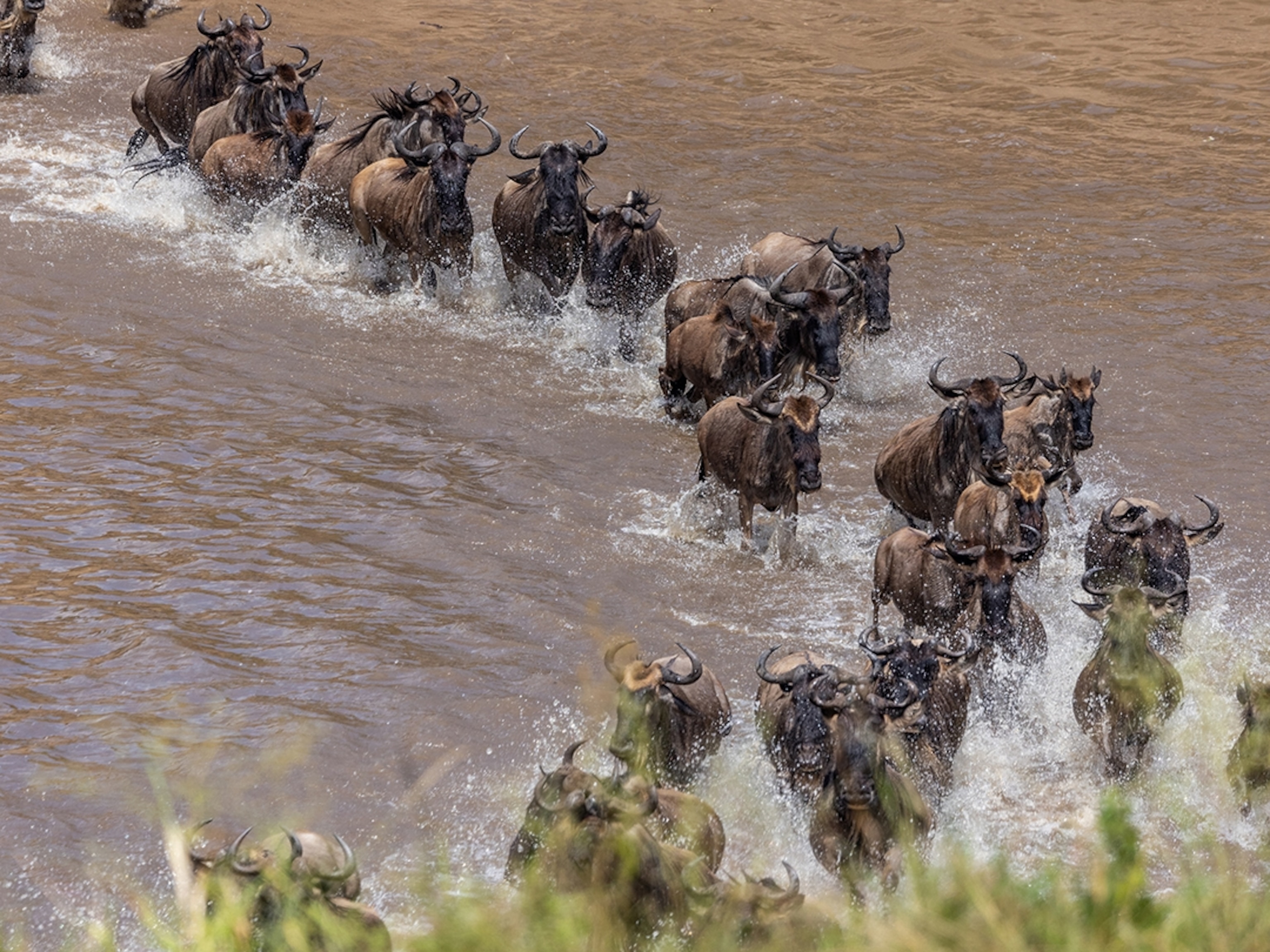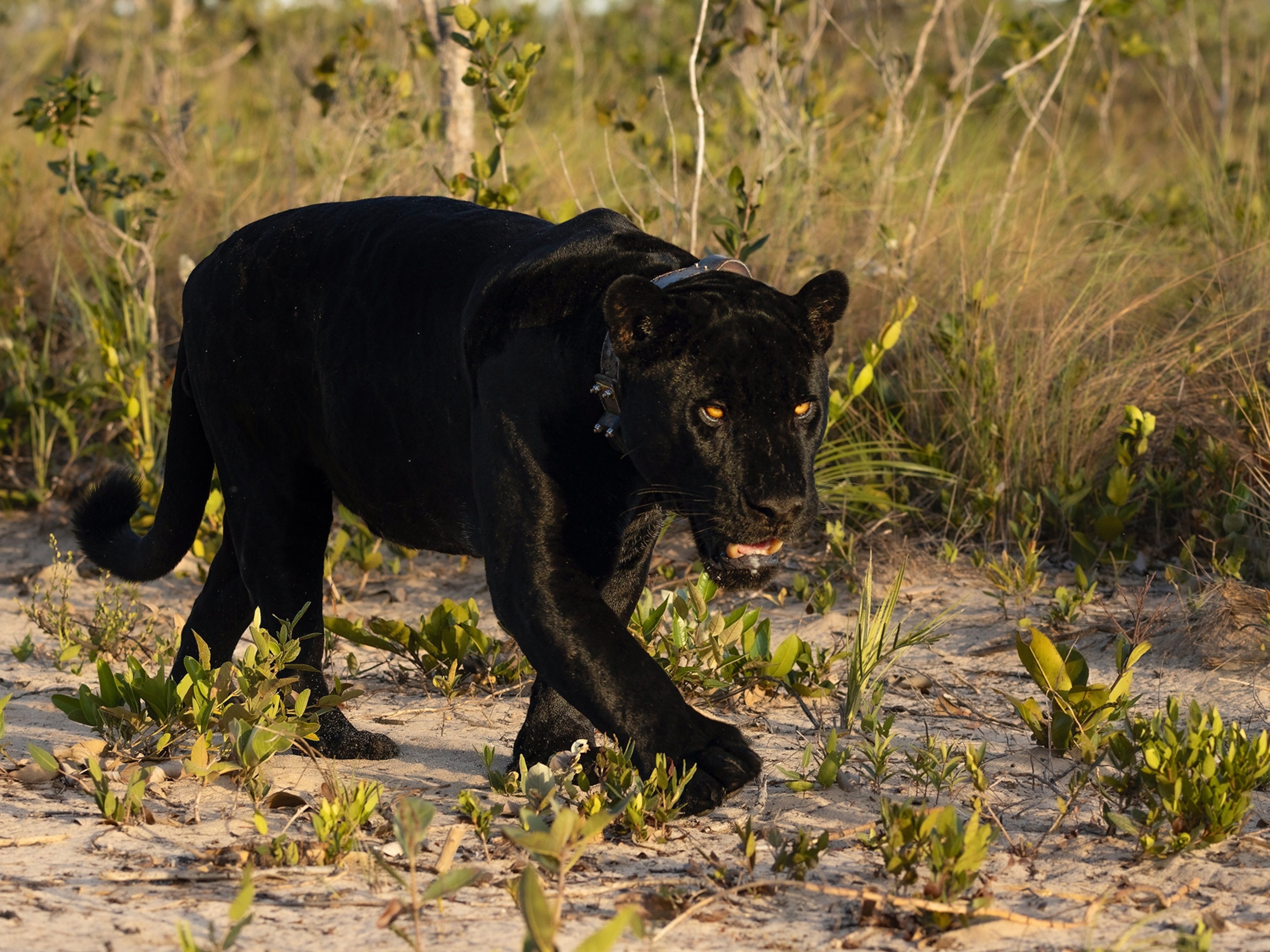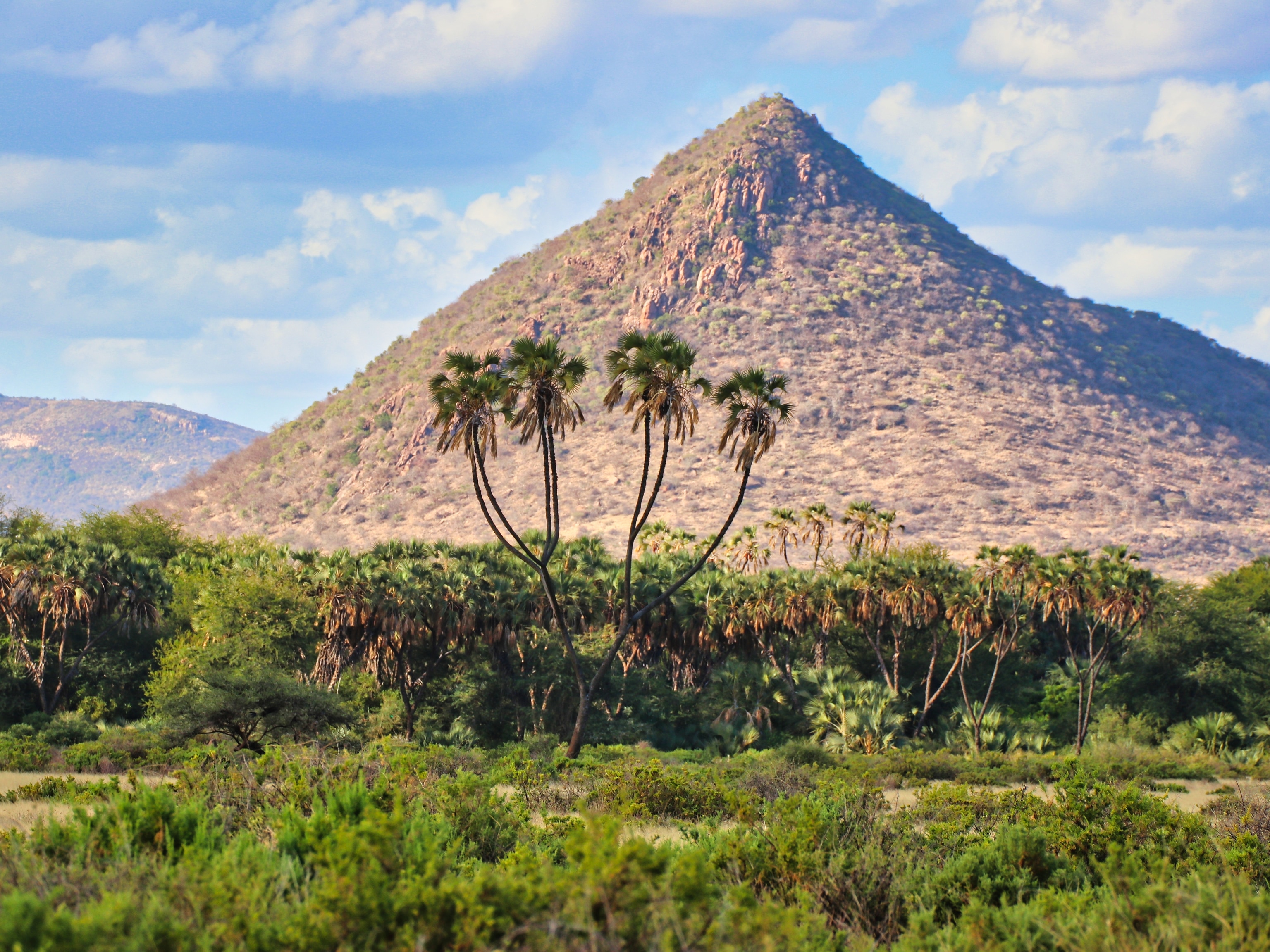
On safari in Ruaha National Park, Tanzania's next big wildlife destination
The largest protected wildlife area in Tanzania, Ruaha National Park is a land of astonishing sights. Now, a new ‘citizen science experience’ is offering hands-on conservation experiences in the heart of the park’s wild Usangu Wetlands.
Msembe Airstrip is no high-tech air hub. It’s a stripe of red earth in the depths of the Tanzanian outback, with bushwillow shrubs and baboons in place of a departure lounge. Hawk-eagles perch just off the runway and colourful lizards scuttle in the dust. It has an unassuming, middle-of-nowhere feel — but don’t be fooled. The airstrip is a portal to a land of giants. Minutes away from where my little Cessna has buzzed down to land, I stare half-dazed as a large herd of elephants plods past a baobab tree.
There’s a rare beauty to a mature baobab tree. It towers over the grasslands like some sort of biological error, its trunk vast and lumpen and its branches fat and twisted. In its sheer girth, it’s a miracle. “We call them lifetime trees,” says guide Gerald Minja, cutting the engine of his Land Cruiser. The baobab stands stoic in the hot July sun. “Every three feet of circumference represents 100 years of growth,” says Gerald. It makes the specimen in front of us at least a millennium old. The elephants file past, accustomed to this sort of thing, silent save for their steady progress through the brushwood.
Here in little-visited Ruaha National Park — the largest protected wildlife area in Tanzania, and one of the most biodiverse in East Africa — the sights and statistics are often improbably sized. My two-part trip is taking me to a new conservation camp in the park’s remote southern wetlands, but I’m starting in the more traditional safari confines of Jabali Ridge. The lodge is set on a rocky outcrop above the savannah and showcases two contrasting types of luxury. There’s the cultivated kind — wide balconies, four-poster beds, a breeze-cooled spa — and the more organic kind, where the surroundings serve up widescreen drama for fun.
On my first morning, I wake at first light to see three giraffes browsing acacia leaves outside my balcony, the plains behind them tinted with a tangerine glow. Half an hour later, on a dawn drive, we round a corner in the bush to find the way blocked by a 200-strong herd of buffalo. We stop. They stare, nostrils glistening. “They always look at humans like we owe them money,” laughs Gerald. As he talks, oxpeckers perch on some of the bigger males, snaffling ticks from their flanks. “Buffalos are dangerous animals, but they’re so good for the land. They’re always eating, pooing and stomping. They keep things fertile.”
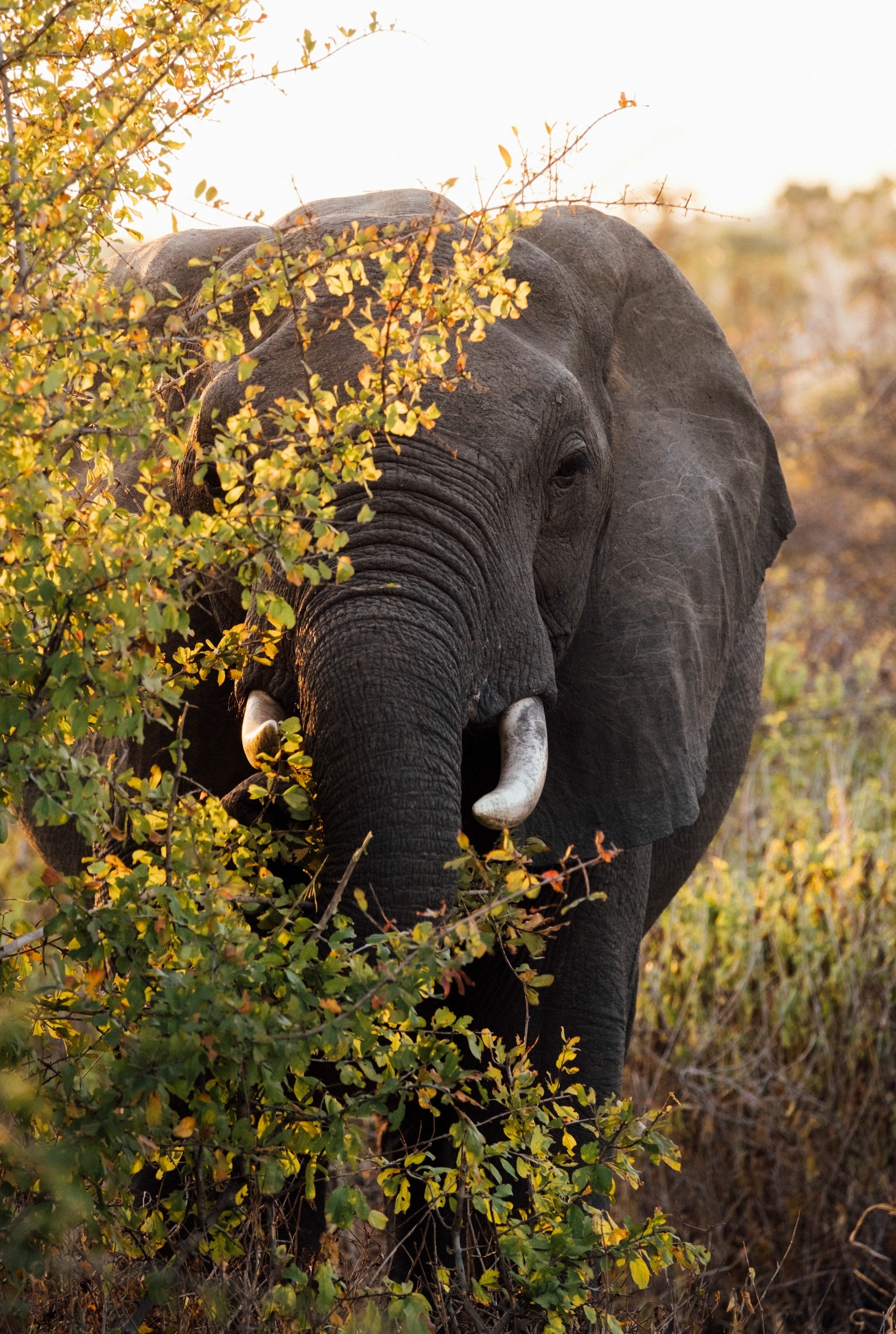
To judge from the terrain around Jabali Ridge, these landscape gardeners have an environment in which they can thrive. Fan palms and euphorbia share the grasslands with sausage trees and baobabs; the latter’s jelly-belly silhouettes are a surreal counterpoint to the dainty dik-diks that totter beneath them on featherlight legs. On a drive, winding between thickets of wild lavender as sunbirds flit overhead, it’s easy to lose all sense of which is way is north, south, east or west. The tropical vegetation is all-enfolding.
This is unsurprising, given that Ruaha National Park covers an area of around 7,800 sq miles. For context, that’s about thirteen times the size of the Maasai Mara or (to cite somewhere with rather less megafauna) three times the size of Devon. Yet the park remains relatively unknown, drawing fewer than 10% of the annual visitor numbers enjoyed by the smaller but hugely popular Serengeti, elsewhere in the country. Exactly why isn’t fully clear. The infrastructure here is far less developed, but those who do come calling can expect serious wildlife rewards.
At sunset, our Land Cruiser parks by a dry riverbed and I’m handed a cold beer. I step onto the sand. The heat of the day is still strong and the sky’s turning scarlet. Soon there’s a kerfuffle on the opposite bank, as a troop of vervet monkeys sound warning calls. Hopping back in the vehicle, we find the cause: a well-sated leopard sauntering through the grass. As we edge closer it stops and rests, belly on the ground, eyes alive. But as the light dims, so too does the view of the cat, until there’s nothing left but insect-buzz and an indistinct shape, and the knowledge that the leopard, just feet away, can see far more of the dark than we can.
There’s a further big-cat highlight on my final evening before we move on to the wetlands. We come across a pride of six lions reclining in the grass, a mass of honey-hued muscle that takes the breath away. They’re lying in the shade of a broad-leaved shepherd tree, licking their giant paws and slumbering on each other like house cats. The adult males have no real mane to speak of — an evolutionary quirk to cope with the Ruaha heat — but every yawn reveals teeth as deadly as daggers.
We watch them at length, until Land Cruiser and lion pride go their separate ways. We return to the comfort of the camp, where button-nosed hyraxes bumble up and down the rocks and Bloody Marys are mixed at the bar. The predators head into the dark, in search of sustenance of their own. Somewhere out there, an antelope or two are about to have a really bad night.
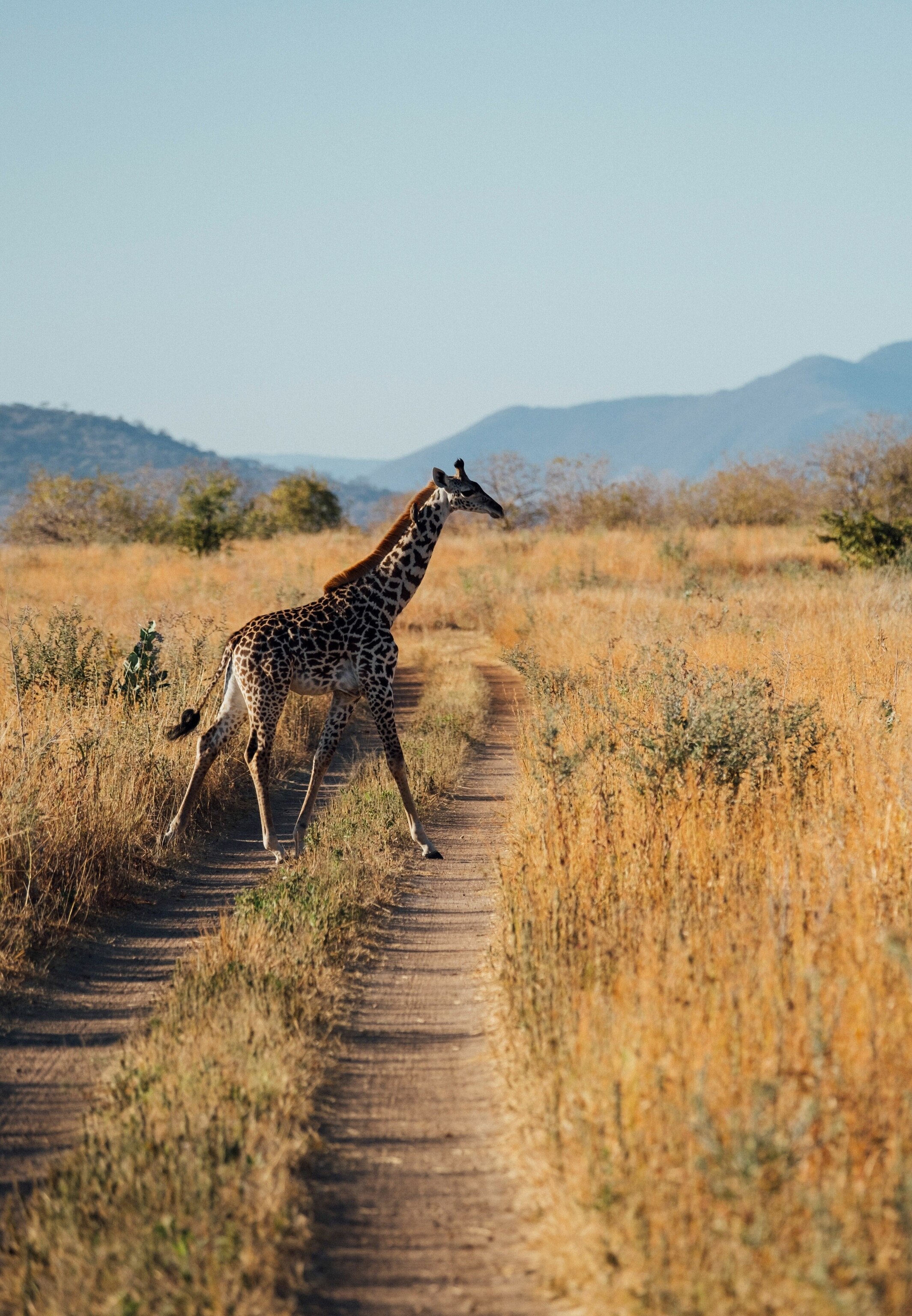
A new paradise
The giantess is coming. She steps along the riverbank, panning her gaze left and right. Her bill is a bayonet, her eyes are beads of amber, her neck forms a perfect S-shape. She’s a 5ft-tall goliath heron, and the river is hers. Without warning, she unfurls into flight, her vast wings outspread like sails as she slow-beats along the watercourse. She’s a titan in bird form, a vision of grace soaring above flatulent pods of hippos, and any fish she might spy is not long for this world.
Fadhili Saning’o looks on with interest. “There haven’t been formal wildlife observations in these wetlands until recently,” he whispers, gesturing at the acacia groves and the seasonal, straw-coloured grasslands around us. “But nearly 500 species have been spotted now.” Fadhili is guiding me on an early-morning walk in the Usangu Wetlands. Bush thorns snag our trousers as we wander. Rippling banks of cumulus clouds fill the sky, but there’s life wherever we turn — swallows gusting above the treetops, crocodiles at the water’s edge, herds of impala on the flatlands.
Fadhili is the manager of the newly opened Usangu Expedition Camp, a self-styled ‘citizen science experience’ in the heart of the wetlands. It has an adventurous-sounding name for a reason: the site has just four guest tents, runs largely on solar power and is the sole camp in the wetlands (its nearest neighbour sits some 40 miles away, beyond thick miombo woodland). Its isolation, and its focus on conservation, means the camp plays an important role in current efforts to understand the diversity and behaviour of the local ecosystem, with guests actively encouraged to log what they see.
This is significant. When Ruaha was granted National Park status in the 1960s, the Usangu Wetlands lay outside its borders. Only in 2008 was the park expanded to include this colossal spread of riparian land, which spent a century as an unprotected hunting reserve that also suffered from the effects of cattle-ranching, poaching, illegal fishing and mismanaged irrigation. This in turn means there has only ever been a loose understanding of exactly what lives here, and how best it can be protected. When I arrive at the canvas-covered camp HQ, I’m shown two old poachers’ bicycles hung from silver cluster-leaf trunks. The decoration has a simple message: things in the wetlands are moving on.
The region’s ongoing recovery is vital. The Great Ruaha River, the mighty freshwater artery that has its beginnings here in the wetlands, is the lifeblood of both the park itself and much of south-eastern Tanzania. “There are 15 staff at the camp, and we all grew up locally,” young guide Anderson Pakomyus Mesilla tells me, as we watch lilac-breasted rollers swooping from tree to tree. “We understand why this place is so important.”
Predators roam nearby — one morning we find the chewed-clean skull of an unfortunate reedbuck — but safari guests are a novel proposition here, and vehicles are a far from customary sight, so the wildlife is more prone to keeping its distance. This doesn’t stop the long grass around the tents being full of unexplained rustles, of course, nor does it stop ready sightings of everything from zebras and jackals to frogs and fish eagles.
Usangu Expedition Camp — which, like Jabali Ridge, is run by responsible safari specialist Asilia Africa — is open from June to November every year, when lower water levels mean the wetlands become grassy plains. It’s a special area by day, and magical by night, with all cooking at the camp done over an open fire.
A study by the African Leadership University’s School of Wildlife Conservation showed that some 623,000 people were employed in Tanzanian tourism pre-pandemic, a figure that was projected to have fallen by more than 475,000 during the Covid-19 outbreak. The recovery will be far from instant, but there are heartening stories from this far-flung corner of the national map.
“My grandparents lived here before it was a reserve,” Anderson tells me. “My grandpa is almost 97 now, but he still tells me tales of life here, so when Asilia was looking for staff three years ago, I applied as a casual worker.”
Twelve recruits spent three months making a track through the woodland for vehicles to reach the new camp. In this time, Anderson began learning English by downloading Barack Obama speeches from the internet. “Birdlife is one of my passions,” he continues. “My dream was to become a guide, and now it’s happened.”
It’s only in the vicinity of the camp the true scale of the wetlands becomes clear. In the mornings, pale greens and sun-bleached yellows stretch out in an infinite prairie, with massed herds of kudus and waterbucks roaming the land like troops across a war map. As a safari destination, it feels different to the norm. This is partly because the wildlife, as I’ve seen, is more skittish than in areas with more visitors. But if you want time in the wilderness, where the nightjars chirr and the chances of seeing another vehicle are virtually zero, you need to take it on its own terms.
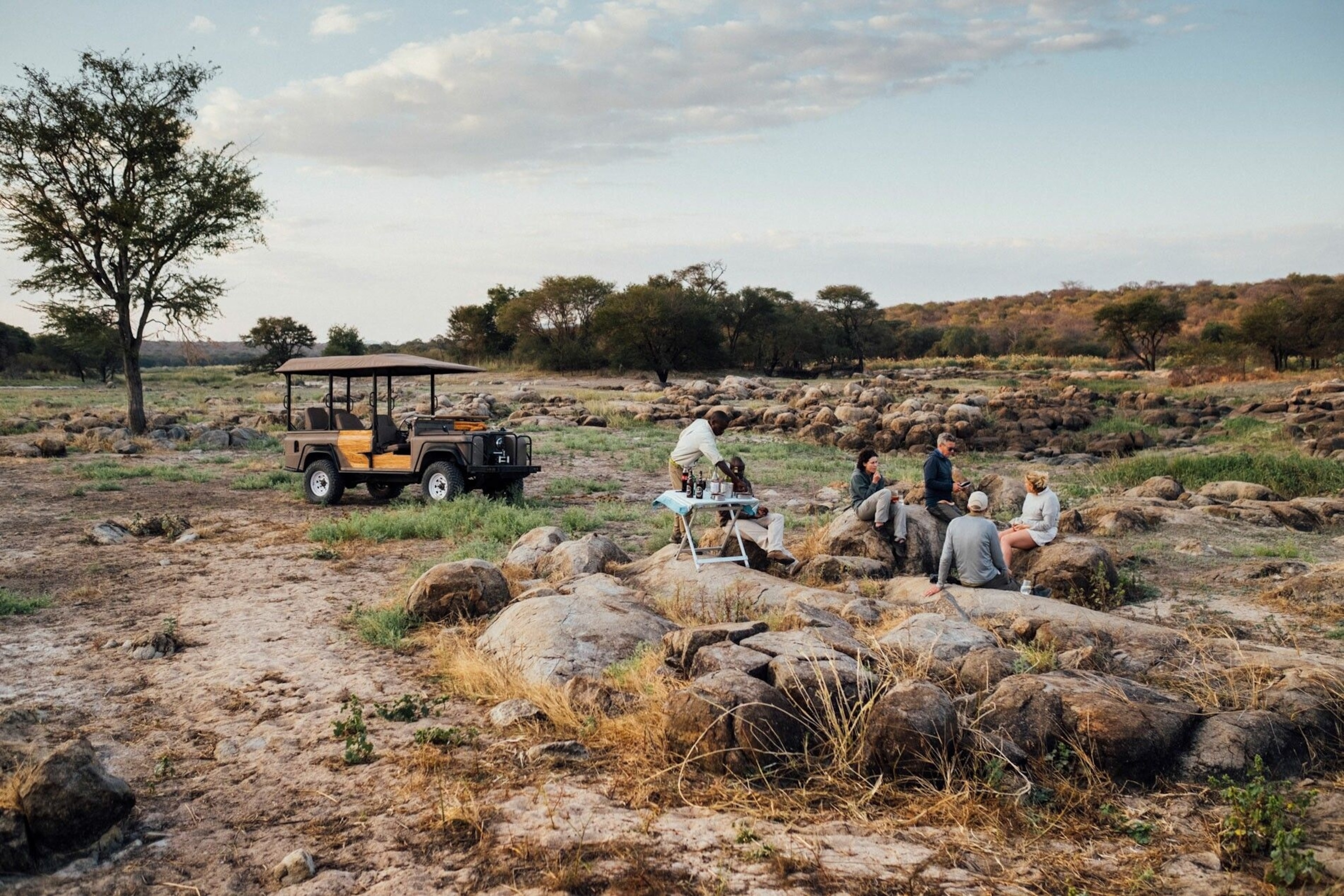
Campfires and conservation
Night has fallen, and the glow-in-the-dark impalas move through the trees like ghosts. The herd is less than 100ft away, but I’m watching their progress on an iPad showing live imagery from a thermal monocular camera. Anything with body warmth — bushbabies, impalas, big cats on the prowl — glows white-hot on the screen. There’s no disturbance to the animals, no lights being shone in their direction, just a private viewing of the plains at night. It’s also an effective way of formally recording the movements of whatever happens to be out and about.
This approach to conservation is no token gesture. Supported by investment from billionaire businessman Jim Ratcliffe, the camp plays a key role in a three-way partnership between Asilia, the Tanzania National Parks Authority and the Tanzania Wildlife Research Institute, which are collectively conducting a biodiversity audit of the wetlands. Everyone who stays at the camp is given a motion-sensitive camera trap on arrival, a device that’s placed out in the bush. It’s then monitored when the guest departs. The results form part of the wider data set; rare species such as pangolins and wild dogs have already been spotted on camera.
“The goal of the whole project is to get a better understanding of what lives here and the threats they face,” explains one of the coordinators, Leena Lulandala, when I meet her in the Douglas Bell Eco-Research Station, housed in a tent on the camp outskirts. “We’ve captured 45,000 images over the past 11 months.” She then talks me through the iNaturalist app, which guests are encouraged to download to record any unusual sightings. Visitors can even pay to assist in the darting and collaring of a lion or leopard, a measure that helps safeguard the cats’ future.
In line with the conservation ethos, the two safari vehicles used by the camp are upcycled old Land Rovers, rebuilt from the wheels up. They’ve been modified to run on ethanol, a fuel made from molasses from a nearby sugar plantation. “We call this one ‘gongo’,” says Anderson, as he hops up behind one of the steering wheels. “It’s a local word for moonshine.”
The lack of any other camps in the region gives the whole area the feel of somewhere unsullied. Guests can try walking safaris and water safaris, as well more standard exploratory drives. All of them feel like trips into a private outback. One evening we drive out to a bend in the river for a drink. We’re surrounded by birdsong and darkening woods. Hippos stir the river’s surface, hornbills fly overhead, warthogs and ostriches appear from stage right. And there’s not another traveller in sight.
Back at camp, as stews bubble on the fire and constellations dot the night, the conversation turns to large antelopes. The floodplains are full of them, each one a precision-engineered herbivore with tall shoulders, delicate markings and don’t-hassle-me horns. One species in particular is here in high volumes. “We’ll find topis tomorrow,” says Fadhili. “Lots of them.”
He’s true to his word. Early the next morning, we head off to reach some of the wide-open grasslands further from camp. As the land begins to lighten, zebras and cattle egrets appear in numbers. We pass through rolling scrubland and clusters of trees covered in the dangling baubles of weaverbird nests. After an hour, chocolate-brown specks start to busy the horizon.
By the time we cut the engine, these specks have multiplied. Each one is a topi with banded thighs, pink ears and legs built to run. A vast herd is passing across the land, slowly at first until, on some unseen signal, it stirs to life as though called to a pressing appointment on the other side of the plains. The spectacle of hundreds of cantering antelopes is hypnotic. The herd’s behaviour will go down in the log — another piece of data to help build a picture of life on the wetlands — but for now the animals flow like water across this remote pocket of East Africa, travelling south as the savannah billows out around them.

Getting there & around
No airlines fly direct from the UK to Tanzania. Carriers with one-stop options between London and Dar es Salaam’s Julius Nyerere International Airport include Emirates (via Dubai), Kenya Airways (via Nairobi) and Turkish Airlines (via Istanbul). From Dar es Salaam, internal flights on small Auric Air planes land at various airstrips in Ruaha National Park. Getting from Jabali Ridge to Usangu Expedition Camp is done either by 4x4 (5-6 hours with stops) or via helicopter.
When to go
Ruaha is best visited during the long dry season between June and October. Unlike some of the busier parks in the north of the country, it’s unlikely to feel crowded, even in peak season.
Where to stay
Usangu Expedition Camp: from US$700 (£610) per person per night, with minimum three-night stay and a compulsory conservation donation of US$250 (£220) per person per day.
Jabali Ridge: from US$875 (£775) per person per night.
How to do it
Asilia offers a seven-night safari with three nights at Usangu Expedition Camp, three nights at Jabali Ridge and a night at the Dar es Salam Serena Hotel, from US$8,020 (£7,025) per person, based on two people sharing. This rate includes all internal flights from Dar es Salaam, safari activities, all meals and house drinks, as well as a US$750 (£655) conservation donation to the Usangu project. asiliaafrica.com
Published in the November 2022 issue of National Geographic Traveller (UK)
Follow us on social media
Twitter | Facebook | Instagram
